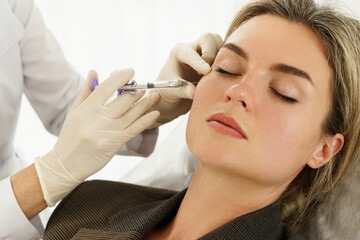Skin whitening treatments have gained significant popularity worldwide, especially in cultures where lighter skin tones are often linked to beauty ideals and social status. This article explores the scientific principles underlying various skin whitening treatments, their mechanisms, active ingredients, and the potential benefits and risks involved in pursuing lighter skin. Understanding the science behind these treatments can help individuals make informed choices regarding skin health and cosmetic procedures.
Understanding Melanin Production
To appreciate the effectiveness of Skin Whitening Treatment in Dubai, it is crucial to understand the role of melanin. Melanin is the natural pigment responsible for the color of the skin, hair, and eyes. Produced by specialized cells known as melanocytes, melanin serves as a protective barrier against ultraviolet (UV) radiation from the sun. The more melanin present in the skin, the darker its tone. Genetic factors, environmental exposure, and hormonal changes influence melanin production.
Mechanisms of Skin Whitening
Skin whitening treatments typically work through one of three primary mechanisms:
- Inhibition of Melanin Production: Many treatments function by inhibiting the activity of tyrosinase, an enzyme critical in the melanin synthesis process. By reducing the production of melanin, these treatments aim to lighten the skin tone over time.
- Exfoliation: Some skin whitening products leverage exfoliation to remove dead skin cells and reduce the appearance of dark spots. By sloughing off the outer layer of skin, these treatments promote the growth of new, lighter skin.
- Skin Cell Regulation: Certain treatments target skin cells to modulate their behavior, encouraging the fading of hyperpigmented areas and promoting a more even skin tone.
Common Ingredients in Skin Whitening Treatments
Numerous active ingredients are commonly employed in skin whitening products, each having unique properties and mechanisms. Some of the most prevalent include:
1. Hydroquinone
Hydroquinone is a well-known skin whitening agent that inhibits melanin production. Used in both over-the-counter and prescription formulations, it is effective for treating hyperpigmentation conditions. However, prolonged use can lead to side effects, including skin irritation and a condition known as exogenous ochronosis, characterized by bluish-black discoloration.
2. Kojic Acid
Derived from mushrooms, kojic acid is an alternative to hydroquinone that also works by inhibiting tyrosinase. It is often found in cosmetic products and offers a gentler approach to skin lightening. Kojic acid's effectiveness and lower risk of side effects make it a popular choice for many.
3. Arbutin
Arbutin is a naturally occurring derivative of hydroquinone found in plants like bearberry. It functions similarly to hydroquinone but is gentler on the skin. Arbutin converts to hydroquinone upon application, producing the desired whitening effects without the harsh side effects.
4. Vitamin C
Vitamin C is known for its antioxidant properties and plays a significant role in skin brightening. It inhibits melanin production and reduces the appearance of dark spots by neutralizing free radicals that can cause skin damage. Its brightening effects, combined with its safety profile, make vitamin C a common ingredient in many skin care formulations.
5. Licorice Extract
Licorice extract contains a compound called glabridin, which inhibits tyrosinase activity and prevents the production of melanin. Its soothing properties make it suitable for sensitive skin, helping to reduce redness and irritation while providing a lightening effect.
Types of Skin Whitening Treatments
Skin whitening treatments can generally be categorized into three main types:
- Topical Treatments: These include creams, gels, and serums containing active ingredients like hydroquinone, kojic acid, and vitamin C. They are applied directly to the skin to target specific areas of hyperpigmentation.
- Chemical Peels: Utilizing acids such as glycolic or salicylic acid, chemical peels exfoliate the upper layers of skin, improving its appearance and minimizing dark spots. Over time, they can significantly lighten skin tone.
- Laser Treatments: These procedures utilize targeted light energy to diminish pigmentation. Commonly used to treat freckles, melasma, and sun damage, laser treatments can effectively produce profound and lasting results.
Benefits of Skin Whitening Treatments
The primary benefit of skin whitening treatments is achieving a more even skin tone, which many individuals desire. With successful treatments, users often report improved self-esteem and confidence levels. Additionally, addressing specific pigmentation issues can lead to healthier-looking skin overall.
Risks and Considerations
While skin whitening treatments can offer benefits, they are not without risks. Some potential side effects include:
- Irritation and Allergic Reactions: Active ingredients can cause skin irritation, redness, and allergic reactions in susceptible individuals.
- Long-term Effects: Prolonged use of certain whitening agents, particularly hydroquinone, can lead to adverse effects such as exogenous ochronosis or increased skin sensitivity.
- Increase in Sun Sensitivity: Many skin whitening treatments can make the skin more sensitive to sunlight, increasing the risk of sunburn and further pigmentation issues if proper sun protection is not implemented.
- Ethics and Cultural Context: The push for lighter skin in certain cultures raises ethical concerns surrounding beauty standards and the psychological implications of skin whitening.
Conclusion
The science behind skin whitening treatments reveals a complex interplay of biochemical processes and cultural implications. Understanding the mechanisms, active ingredients, and types of treatments available can empower individuals to make informed choices about their skin care. While there are potential benefits to achieving a lighter, more even complexion, it is important to approach these treatments with caution, considering both the potential effects on skin health and the broader societal implications. Ultimately, prioritizing skin health and self-acceptance can lead to a more positive relationship with one’s skin.





Comments